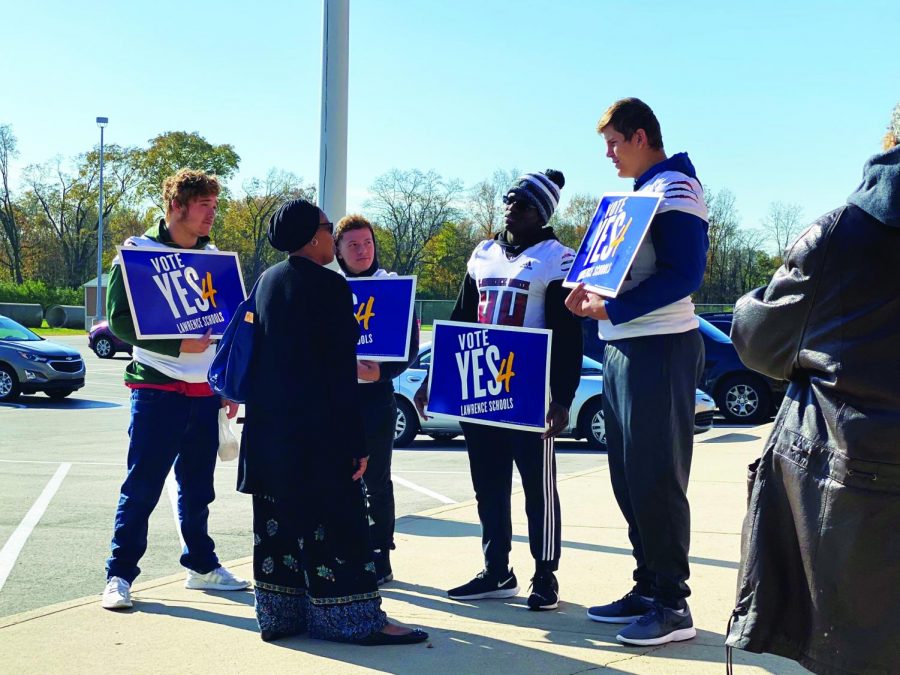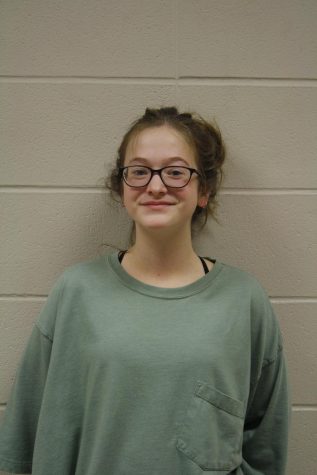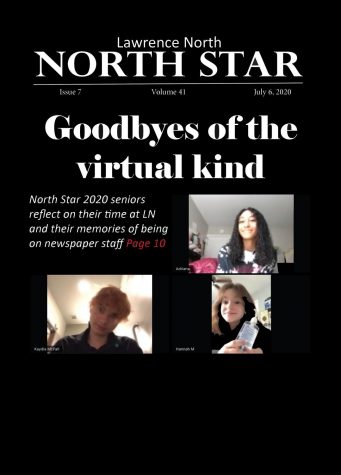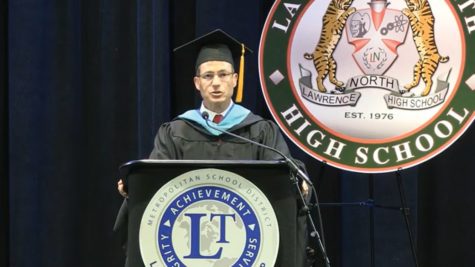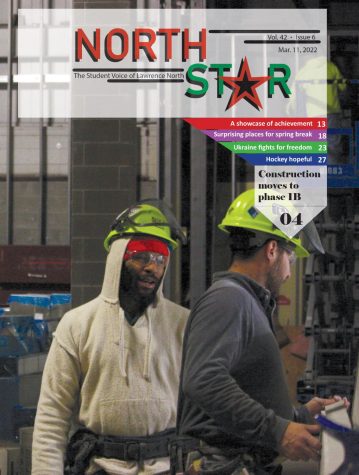Referendum passes at polls
The Lawrence Township referendum passed 68 percent to 32 percent. Now the township is finalizing plans for construction.
On Nov. 5, the referendum successfully passed the ballot with an impressive 68 percent.
“It was very much a celebration of public education, of what people truly believe about the needs in public education,” Principal Brett Crousore said.
The school board announced their pursuit of the referendum on May 6. With the help of the Yes4Lawrence Schools political action committee, administrators were excited to see the turnout for Nov. 5. Though hopeful, the district was prepared for any kind of result.
“It was a hard day. I’ll be honest, Dr. Smith prepared us for it because he said, ‘Yes, we know our school community, but we don’t necessarily know our full community.’ And I felt very proud on that day to be able to speak to voters as they walked in when they asked questions, and it really felt like I was speaking our truth about what we need,” Crousore said.
Although the township referendum seemed to pass with flying colors, other districts across the state of Indiana weren’t as fortunate. Of the six schools that submitted for a school tax levy referendum for the November election, three failed.
“I watched the Danville, I watched the Center Grove; two not pass that were local referendums right now. They used to pass. I think around the state was a 53 percent pass rate of the referendums. And so, you get nervous,” Crousore said.
For a referendum to pass, the turnout has to be in support for more than 50 percent.
“We thought, ‘If we get a 60-40, that’s huge,’ and to pass at 68 percent just spoke to the work of our political action committee. We had some amazing families who did a lot of work when we were not able to do the work,” Crousore said.
Reactions throughout the community:
Though the community seemed to be in heavy agreeance by looking at the huge positive turnout, there were some dissenters.
“I mean, if it’s going to better the school, then ‘yay,’ that’s a good thing, but my grandma was upset with it because it was going to make her taxes really bad. She’s in one of those houses that she can hardly afford now,” freshman Trinity Smith said.
Mark Frankum, a math and psychology teacher at LN, started his first year of teaching in 1980, just four years after the building was built. Frankum supports the referendum on the grounds for improved safety and security within the building and internal improvements to be made. However, he is wary about such a big amount of money being asked for. He also pointed out that renovations took place in 1995 after a spurge of growth.
“We were in bad shape in the ‘90s because we were growing so much and we needed more space so what I don’t really understand is we did a huge addition to the school from the original school and that was needed because we didn’t have room. Now, I mean we got 2,700 students and we could have some more but I don’t know. don’t know if it’s needed but everyone says it’s needed,” Frankum said.
Guidance department co-chair Connie Sivertson has been a part of the district for more than 20 years. When she heard the news that the referendum had passed, she was excited for the new possibilities for the school but wished that money to accomodate for teacher salary raises would have been included.
“Personally, I was a 50/50 person. I was really excited that the referendum passed which would allow us to have new, innovative spaces for learning and being. And Lawrence North? Love this place, but it is time for some updates. The other part of me was disappointed that there was not money for teacher salaries put into the referendum initially. It was a really small amount when you’re looking at that many million dollars… and that would’ve made a world of difference for a lot of different people in this building, across the district. Not just here. So I was glad it passed, but I wish there would have been additional money in it that would have supported the salary structure,” Sivertson said.
Although Sivertson wishes things would have been handled differently, she still heavily supports the referendum. She understands the hefty amount, but believes it is the best choice for both the students and the community.
“It’s a lot of money and I know there are people with fixed incomes or that might struggle to make up that additional couple hundred dollars in a home assessment. But I’m a believer that schools really are the backbone of the community and I’m thinking, ‘Come on, if you want a strong community, you have to have strong and innovative schools,’” Sivertson said.
Becoming a reality:
With the referendum now officially becoming a reality for the district, there are steps being taken for more thorough planning between all people involved. Specifically for LN, Crousore meets with the construction team every week to discuss plans moving forward.
“It means a lot of planning. Now we’re starting to really get into the work as to ‘What do we do?’ We have an idea of the phasing and what needs to take place. But now it becomes reality. The big thing on me is how do we function as a school, maintain a safe and secure learning environment, while construction is going on for the next three years,” Crousore said.
Phase one of construction begins June 2020 and will last for about a year and a half. Precisely from door two to the south end of the hallway, most of the demolition will be contained to the front of the building. The renovations consists of a new foyer, new main entrance, new main office and the addition of about 70 new classrooms. To accommodate, room 110 will be converted to the new front office.
“Basically this whole front hallway is going to be lopped off and all of the counselors are going to move into the offices that sort of ring the media center. So we will all get moved in there. Ms. Crawshaw will go in there. Several other office staff people will be moved into a classroom that isn’t going to be impacted, so we’re all going to obviously be upended starting in the summer,” Sivertson said.
As demolition begins, Crousore will then be officing out of the commons. The life skills classrooms and all office members will be temporarily located elsewhere, with counselors moving to various offices within the library and special needs classrooms moving into the current art hallway. With the movement of the counseling department, concerns arise.
“That’s an area that concerns me most. What I don’t ever want is one of you guys to walk by your counselor’s office, see that they’re not there and then just go on and deal with their issue and miss the opportunity to just sit and talk with someone,” Crousore said.
As a counselor, Sivertson is not at all phased by their temporary relocation. The department sees this instead as a challenge and approaches it with optimistic stride.
“We can test it, we can flex it, we can see if there’s any issue with it. We’ve got phenomenal communication capabilities that, even if we’re not where we’re typically, historically located, we’ll find other ways to reach students and make sure we’re getting news out and most importantly, that students know how to get a hold of us,” Sivertson said.
Apart from the concerns of the physical movement from different staff members of the building, there are also potential concerns dealing with the actual makeup of the building or what they might find during construction.
“The unknown. That’s my concern. What will they find start demolition? Anytime you deal with construction, everything I’ve heard is just be ready for all that type of stuff that’s going to happen. That will just be a part of the growing pains of construction,” Crousore said.
In ensuring student safety throughout the course of construction, part of that includes the monitoring and screening of those coming to work in the building. Crousore navigates this with some experience as he has some familiarity with construction work with the renovations of the auditorium during 2018.
“Construction workers. There are background checks done and everything, it’s really like you are coming to be in a school. When those guys come in, there is a plan for how they’re to interact or if they’re ever to interact with students. We’ve done this before. That’s why I really like that I’ve been through a small project with the auditorium,” Crousore said.
The construction and demolition for phase one will continue through the rest of the school year. Crousore acknowledges that the school day might look a little different, but he believes that the end result will be worth the wait.
“Yes, we’re going to be impacted. Yes, that class might meet in another [area], it doesn’t mean we will decrease and devalue the programs we currently have. It will just look different for a few years. Which, to the current freshmen, they’re going to see a lot of construction. They just are. But they’re also going to reap the benefits of the brand new classrooms because they are going to get to move into them,” Crousore said.



